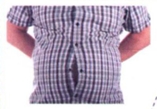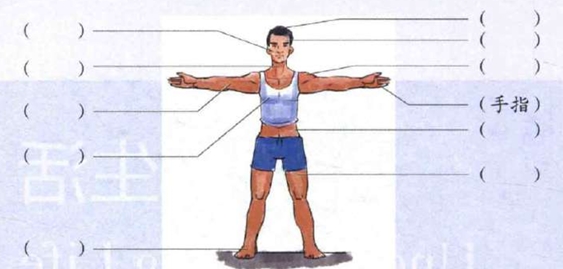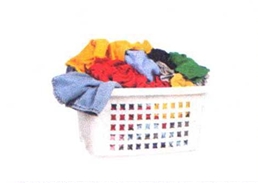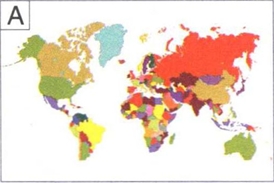- 今天晚上他们在哪儿吃饭?Jīntiān wǎnshang tāmen zài nǎr chī fàn?
- 她觉得那件衣服怎么样?Tā juéde nà jiàn yīfu zěnmeyàng?
- 她今天为什么不去打球了?Tā jīntiān wèi shénme bú qù dǎ qiú le?
- 她觉得昨天的考试怎么样?Tā juéde zuótiān de kǎoshì zěnmeyàng?
- 他为什么以后每天就喝一杯咖啡?
Tā wèi shénme yǐhòu měi tiān jiù hē yī bēi kāfēi?
Describe the pictures using the newly-learned language points and words.

Zhè jiàn yīfu ______ bùcuò,jiùshì yǒudiǎnr xiǎo.
这 件 衣服______不错,就是有点儿 小。

Jīntiān ______ wǎn,wǒmen míngtiān zài kàn ba.
今天______晚,我们 明天 再 看吧。

Zhège kāfēiguǎn de kāfēi ______,wǒ měi tiān lái hē yī bēi.
这个 咖啡馆的咖啡______,我 每天 来喝一杯。

Nǐmen bú qù wàimiàn chī,wǒ xiànzài ______ zhǔnbèi wǎnfàn.
你们 不去 外面 吃,我 现在______准备 晚饭。
Nà shì wǒ māma zuò de Zhōngguó cài.
那是 我 妈妈 做的 中国 菜。
Nàge xuéxiào shì Lǐ lǎoshī gōngzuòle hěn duō nián de dìfang.
那个 学校 是 李老师 工作了 很多 年 的 地方。
Wǒ zuì xǐhuan hóngsè de yīfu.
我 最 喜欢 红色 的 衣服。
(2) 状语重读 Stressing the Adverbial Modifier
Nǐ de bēizi jiù zài nàr.
你的杯子 就 在那儿。
Dàwèi de gǒu fēi yíyàng de pǎole guoqu.
大卫 的 狗 飞一样 地 跑了 过去。
Wǒ bàba shì yīshēng, měi tiān cóng zǎo dào wǎn máng gōngzuò.
我 爸爸 是 医生,每天 从早到晚 忙 工作。
汉字 Characters
1 认识独体字 Single-Component Characters
(1) “鱼”,字形像头身齐全的鱼,表示 “鱼” 的意思。
The original form of “鱼” looks like a whole fish. It means “fish”.

(2) “衣”,字形像中国古代的上衣,现在泛指衣服。
The original form of “衣” looks like an ancient Chinese upper garment. Now it refers to all kinds of clothes.

2 汉字偏旁 “子” 和 “广” Chinese Radicals:“子” and “广”
| 偏旁 Radical | 解释 Explanation | 例字 Example Characters |
|---|---|---|
| 子 | 子字旁,一般和孩子有关系。 The radical “子” is usually related to children. |
孩 hái child 孙 sūn grandson |
| 广 | 广字头,一般和建筑有关系。 The radical “广” is usually related to buildings. |
店 diàn shop,store 床 chuáng bed |
运用 Application
1 双人活动 Pair Work
两人一组,询问对方的喜好。
Work in pairs and ask about your partner’s likes.
例如:A: 你喜欢吃鱼吗?
Ni xihuan chi yu ma?
B: 还可以。
Hái kěyǐ.
A: 你喜欢喝咖啡吗?
Ni xihuan hē kāfēi ma?
B: 不喜欢,咖啡有点儿苦(bitter)。
Bù xǐhuan, kāfēi yǒudiǎnr kǔ.
- 旅游、看电影、打篮球、
lǚyóu, kàn diànyǐng, dǎ lánqiú, - 吃中国菜
chī Zhōngguó cài
2 小组活动 Group Work
3 – 4人一组,互相询问并记录你的同学对某样东西或者某件事的看法,每组请一位同学报告情况。
Work in groups of 3 – 4. Ask your group members’ opinions on something and take notes.
Each group chooses a
member to make a report.
例如:A: 你觉得这件衣服漂亮吗?
Ni juéde zhè jiàn yīfu piàoliang ma?
B: 非常漂亮。
Fēicháng piàoliang.
A: 你喜欢写汉字吗?
Ni xihuan xiě Hànzì ma?
B: 还可以。
Hái kěyǐ.
| 人名 Name |
非常+adj. Fēicháng +adj. |
还可以/还不错 Hái kěyǐ / Hái bùcuò |
有点儿+adj. Yǒudiǎnr +adj. |
不+adj. Bù +adj. |
|---|---|---|---|---|
| 小王 Xiǎo Wáng |
衣服 yīfu |
写汉字 xiě Hànzì |
文化 CULTURE
中国人的餐桌礼仪 Chinese Table Manners
中国人无论在家还是在饭馆,多人聚餐时一般会坐圆形餐桌,这样大家都可以面对面。在饭馆里入座的时候,主人的右手边是主客,左手边是次重要的客人。主人对面上菜的位置一般不能给客人坐。
通过餐桌上的菜也可以分辨主客。如果有鱼,鱼头要对着最主要的客人,表示主人对客人的尊重。
Chinese people prefer round tables when dining, no matter at home or in a restaurant, so that all can sit face – to – face. Seated in a restaurant, the host has the main guest on his right hand and the second – most important guest on his left. The seat opposite to the host, where dishes are served, usually cannot be offered to a guest.
One can tell the host from the guest through the dishes also. If there is a fish dish on the table, the head of the fish should point to the most important guest to show the host’s respect for the guest.










暂无评论内容